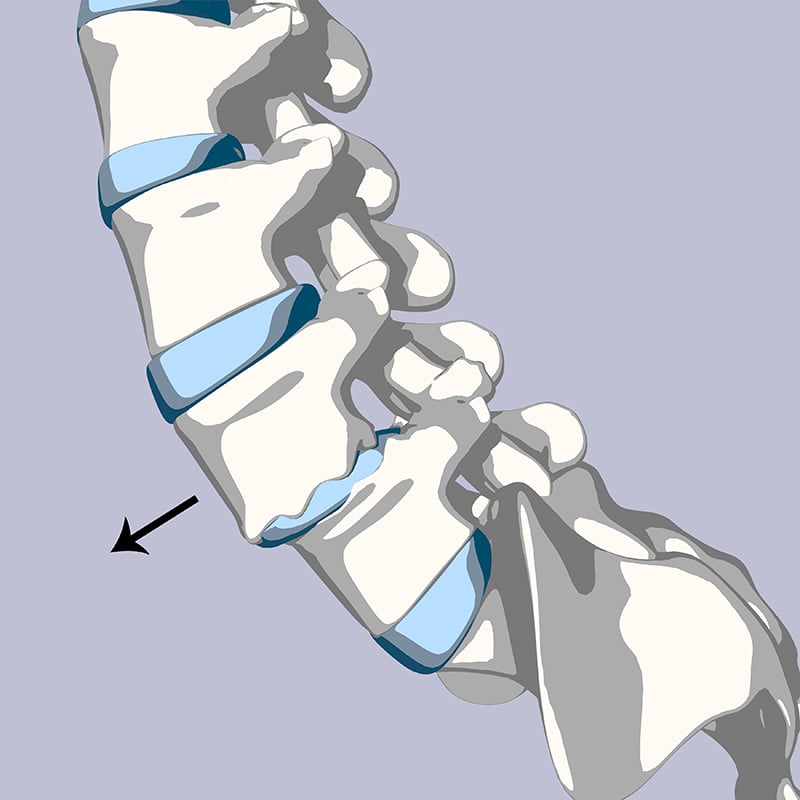If you have difficulty walking or are experiencing back pain that radiates to the leg, this is a warning for spinal disc herniation. This painful condition can occur to anybody at any age, especially among children and older adults. Today, there is an oblique lateral interbody fusion surgery (OLIF) that can completely cure the problem. This is a minimally invasive approach to spinal procedure through the side of the body. It is less painful and enables fast recovery, so you can enjoy your quality life once again.
What Is a Herniated Disc?
Spine is like a water hose which contains spinal cord and nerves. If it slips out of place, the inner hose will be narrowed and press against the nerves, resulting in pain that radiates down the leg. A herniated disc is very common among seniors. The loose and unstable disc creates recurring pain as you bend down or straighten up. Sometimes the herniated disc can put pressure on a spinal nerve, making it difficult for you to walk. It can also cause numbness or shooting pain down the leg to your foot. The condition is occasionally found also in children who suffers from some types of spinal disorder since birth, and the symptoms may only appear when they grow up. It is recommended that, once diagnosed, the children receive treatment promptly before any nerve is damaged.
Make an Appointment
What Causes Herniated Discs?
- Disc or Facet Joint Degeneration is the major cause of herniated disc in seniors as they age. The older we get, the more our spinal bones deteriorate. For some, this situation is so severe that their bones become “loose” and “slip to press against a spinal nerve” later on.
- Spina Bifida (Cleft Spine) or Congenital Scoliosis can easily cause “loose bones” as the young patients gets older, slipping more and more each year until the symptoms becomes noticeable when they reach adulthood.
- Severe Accident such as falling down the stairs or being in a car crash. This can damage the spine and cause the bones to break or loosen, and then slowly slip out of place afterwards until the condition is clear as it interferes with your daily life.

Treatment for Herniated Disc
In treating a herniated disc, if the symptom is unnoticeable or mild, a specific treatment may not necessary. Only some light observation or simple medication and physical therapy to relief the symptoms may be all that is required. However, where the symptom is extreme as a nerve is being badly compressed, a surgery may be needed. In this case, at the core of the operation, there are 4 main factors that have proven to be highly successful:
- Relief compression on the nerve by sufficiently opening up the narrowed disc space.
- Fuse the misaligned spinal bones together. This requires a highly proficient technique using healthy bone graft.
- Realign the spine as close to normal as possible for the long-term benefits.
- Finally, a minimally invasive surgery is recommended because it is less painful and allows for rapid recovery. The patient can return to normal daily routines fastest.
Oblique Lateral Interbody Fusion (OLIF)
OLIF is a minimally invasive approach to spinal fusion surgery from the side of the body. It helps reduce back muscle injury. A surgeon will make a small incision through layers of fats to the spine from the side of the body without disturbing any nerve. This way, the patient will feel less pain and can recover faster afterwards.
Importantly, through OLIF the surgeon can implant a larger disc in place of the damaged one, to help realign the spine more efficiently and place the spine as close to normal as possible. This is a major advantage of OLIF over the traditional method.
Today, OLIF has gained popularity and acceptance around the world because it requires only a small incision, resulting in less pain and less blood loss. It offers high efficiency in anterior interbody fusion as well as in correcting other spinal deformity and misalignment. Significantly, multiple spinal joints can be operated on simultaneously without much trouble. For example, it can help treat seniors who suffer from herniated discs or scoliosis at many levels, while lessening the risk of other complications (such as infection) as compared to the traditional open surgery, in which a long incision through layers of muscles is necessary. The latter causes severe pain and requires long period of recuperation, not to mention the risk of other complications; and it could be too worrisome to the patients that they are discouraged from the surgery altogether.
See The Doctor’s Profile
Advantages of OLIF Surgery
- Less injury to back muscles, enabling faster recovery
- Less chances of nerve damage
- Less pain and recovery time
- Multiple levels of surgery can be performed simultaneously with less injury
- Effective anterior interbody fusion
- Correct scoliosis and slipped disc better than the traditional method
- Reduced risks of complications, such as postoperative infection, especially in elderly
In any case, if you need a spinal surgery to treat a herniated disc, it is important that you follow your medical specialist’s advice properly. And if you decide to have a surgery, it is imperative that you choose the most effective method, because corrective surgeries later are more difficult and complex than the initial right operation. The OLIF is one of the most effective options for spinal surgery today. It will help restore your normal activities in no time.
Talk to Our Agent